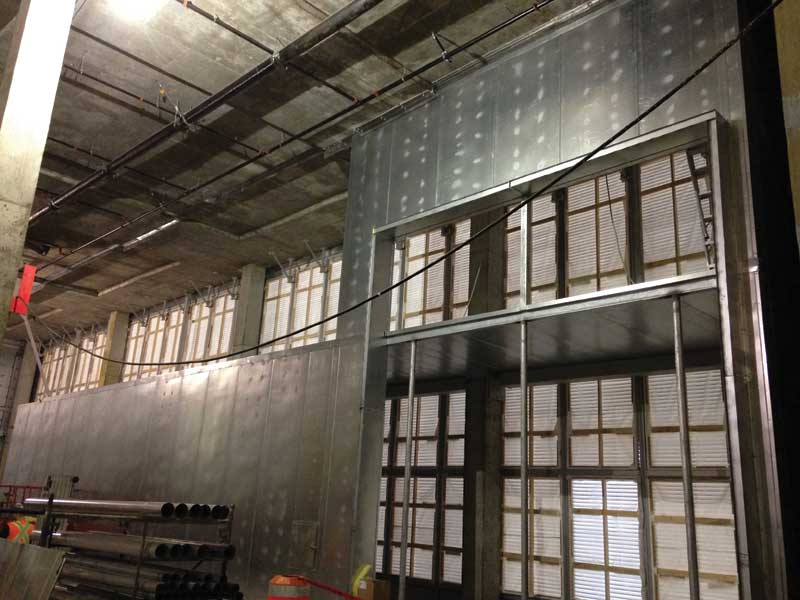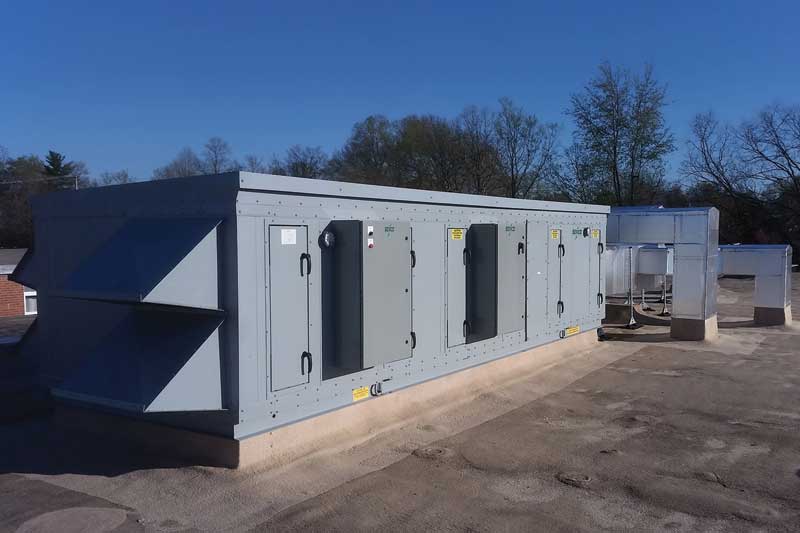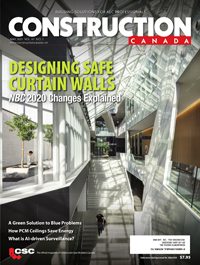Introducing energy recovery ventilation

Desiccant specification choices in ERVs
Enthalpy wheels are ideal for heat recovery in many types of projects, but the wheel’s desiccant media choice—typically silica gel or molecular sieve material—is critical in hospitals for preventing the incoming outdoor air from residual contamination from the outgoing indoor air.
Silica gel has a propensity for cross-contamination because its pores can adsorb and then harbour contaminants from the exhaust air. This can also decrease latent heat transfer. Molecular sieve materials are not susceptible to contaminant adsorption, because the smaller pore size only allows the transfer of the water vapour from the exhaust to supply air streams.
In winter, when outdoor air is below 30 per cent RH due to HAI concerns, moisture collected from the exhaust air can be added to the supply air to raise indoor RH levels, it is critical to not affect outdoor air with indoor contaminants during the humidification process.
In order to further minimize cross-contamination, desiccant surfaces can be specified with anti-microbial coatings to help prevent airborne biological contaminants from harbouring in the media.
Specialty ERV concentration on surgery suites
Special ERV applications, such as the aforementioned hybrid system used for the Sheridan College workshops, are destined for hospitals requiring more extreme energy recovery and humidity reduction in critical areas. Surgery suites, for example, typically demand very low dewpoint temperatures of 5 C (42 F) and drier air, as per ASHRAE 170 requirements. The trend is to design operating rooms (ORs) with their own self-contained system to avoid contact with air from other parts of the hospital.

Standard enthalpy equipment typically cannot handle low dewpoints; however, the HVAC industry has recently developed alternative dehumidification strategies utilizing an active desiccant wheel to dry out the air to very low levels. These systems bring in outdoor air and use a cooling coil reducing the temperature to approximately 12 C (55 F), and then an active desiccant wheel takes the saturated cooling coil’s moisture and dehumidifies it by adding heat. The dried air leaves the wheel at about 26 C (80 F), but at –1 C (30 F) to 4 C (40 F) dewpoint temperatures. Then, the air can be fed to conventional air-handlers for the space’s sensible cooling. The systems deliver dry air on the ventilation portion only; removing the humidity from the space with just the outside air portion.
Another attribute is non-cross-contamination between the indoor and outdoor ventilation during heat recovery. The ventilation is only 20 to 30 per cent of the total air volume, so the challenging factor of moisture removal is easily handled.
Many hospitals are currently retrofitting their ORs’ HVAC systems to comply with ASHRAE 170’s requirements for humidity control. This may require either adding a DOAS to the OR’s air handler, or replacing the air-handler with a DOAS that performs dehumidification and controls space heating/cooling.
Conclusion
ERVs appear to have a strong upward curve as energy recovery becomes imperative for reaching codes, such as ASHRAE 90.1.
“We couldn’t imagine a new building on our campus without ERV,” said Sheridan’s Sinnock. “I see the future of Canadian green building as tempering at the zone level with methods such as chilled beams, heat pumps, or variable refrigerant flow. ERVs will play a major part in conditioning code-required outdoor air to complement those.”
The specified slider id does not exist.
 Steve Ulm is the marketing director at SEMCO LLC, a Fläkt Woods Company specializing in energy recovery equipment, chilled beams, controlled chilled beam pump modules, spiral metal ductwork, and acoustical panel products. He has worked at SEMCO since 2015, and has over 20 years of experience in the component and industrial systems market. He holds a BSEE from Purdue University and an MBA from Northern Illinois University. He can be reached via e-mail at steve.ulm@flaktwoods.com.
Steve Ulm is the marketing director at SEMCO LLC, a Fläkt Woods Company specializing in energy recovery equipment, chilled beams, controlled chilled beam pump modules, spiral metal ductwork, and acoustical panel products. He has worked at SEMCO since 2015, and has over 20 years of experience in the component and industrial systems market. He holds a BSEE from Purdue University and an MBA from Northern Illinois University. He can be reached via e-mail at steve.ulm@flaktwoods.com.







